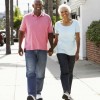 Many things can cause you to fall. The good news is that you can make some easy changes to decrease your risk of falling. This 2-page fact sheet was written by Linda B. Bobroff and Jennifer Hillan, and published by the UF Department of Family Youth and Community Sciences, October 2013.
Many things can cause you to fall. The good news is that you can make some easy changes to decrease your risk of falling. This 2-page fact sheet was written by Linda B. Bobroff and Jennifer Hillan, and published by the UF Department of Family Youth and Community Sciences, October 2013.
http://edis.ifas.ufl.edu/fy736
Category: Aging & Caregiving
Food Safety: Does Your Kitchen Pass the Test?
 Older adults are at increased risk for foodborne illness. To help reduce your risk, follow safe food handling practices at home. How does your kitchen measure up? This 3-page fact sheet was written by Linda B. Bobroff and Jennifer Hillan, and published by the UF Department of Family Youth and Community Sciences, October 2013.
Older adults are at increased risk for foodborne illness. To help reduce your risk, follow safe food handling practices at home. How does your kitchen measure up? This 3-page fact sheet was written by Linda B. Bobroff and Jennifer Hillan, and published by the UF Department of Family Youth and Community Sciences, October 2013.
http://edis.ifas.ufl.edu/fy926
Healthy Eating: Calcium / Alimentación Saludable: Calcio
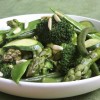 Calcium is the major mineral found in your bones and teeth. Many older adults don’t get enough calcium from the foods they eat. This can lead to bone loss and the bone disease osteoporosis. Osteoporosis puts people at high risk for bone fractures. These 1-page, large print fact sheets were written by Linda B. Bobroff, and published by the UF Department of Family Youth and Community Sciences, June 2013.
Calcium is the major mineral found in your bones and teeth. Many older adults don’t get enough calcium from the foods they eat. This can lead to bone loss and the bone disease osteoporosis. Osteoporosis puts people at high risk for bone fractures. These 1-page, large print fact sheets were written by Linda B. Bobroff, and published by the UF Department of Family Youth and Community Sciences, June 2013.
English: http://edis.ifas.ufl.edu/fy057
Spanish: http://edis.ifas.ufl.edu/fy058
Guia de merendar saludablemente para el adulto mayor fragil (FSHN1219S/FS222)
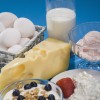 El tomar decisiones inteligentes para la selección de las meriendas ayuda a asegurar que los adultos mayores frágiles satisfagan sus necesidades nutricionales. Estas son algunas meriendas sencillas y nutritivas que son apropiadas para los adultos mayores frágiles. This 3-page fact sheet was written by Paula G. Harris-Swiatko y Wendy J. Dahl, and published by the UF Department of Food Science and Human Nutrition, April 2013.
El tomar decisiones inteligentes para la selección de las meriendas ayuda a asegurar que los adultos mayores frágiles satisfagan sus necesidades nutricionales. Estas son algunas meriendas sencillas y nutritivas que son apropiadas para los adultos mayores frágiles. This 3-page fact sheet was written by Paula G. Harris-Swiatko y Wendy J. Dahl, and published by the UF Department of Food Science and Human Nutrition, April 2013.
http://edis.ifas.ufl.edu/fs222
Pureed Foods: High Protein (FSHN1215/FS208)
 Protein is an important nutrient. Many older adults do not consume enough of this vital nutrient, crucial to overall health and well-being. For those with dysphagia and on a puréed diet, consuming sufficient protein is even more difficult. While a texture-modified diet may not be the diet of choice, the goal is to make it as appealing as possible so that the person consuming the purées can experience a better quality of life. This 4-page fact sheet was written by Jamila R. Lepore and Wendy J. Dahl, and published by the UF Department of Food Science and Human Nutrition, March 2013.
Protein is an important nutrient. Many older adults do not consume enough of this vital nutrient, crucial to overall health and well-being. For those with dysphagia and on a puréed diet, consuming sufficient protein is even more difficult. While a texture-modified diet may not be the diet of choice, the goal is to make it as appealing as possible so that the person consuming the purées can experience a better quality of life. This 4-page fact sheet was written by Jamila R. Lepore and Wendy J. Dahl, and published by the UF Department of Food Science and Human Nutrition, March 2013.
http://edis.ifas.ufl.edu/fs208
Preparation of Pureed Foods (FSHN1212/FS205)
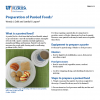 A puréed food is a food item that has been blended, mixed, or processed into a smooth and uniform texture. Examples of foods with a purée consistency include applesauce, pumpkin pie filling, and hummus. Puréed foods may be necessary for people with chewing and/or swallowing problems. For those requiring a puréed diet, it is important to provide a variety of foods. Almost any food can be puréed. However, some puréed foods may be much more acceptable than others. This 4-page fact sheet was written by Wendy J. Dahl and Jamila R. Lepore, and published by the UF Department of Food Science and Human Nutrition, March 2013.
A puréed food is a food item that has been blended, mixed, or processed into a smooth and uniform texture. Examples of foods with a purée consistency include applesauce, pumpkin pie filling, and hummus. Puréed foods may be necessary for people with chewing and/or swallowing problems. For those requiring a puréed diet, it is important to provide a variety of foods. Almost any food can be puréed. However, some puréed foods may be much more acceptable than others. This 4-page fact sheet was written by Wendy J. Dahl and Jamila R. Lepore, and published by the UF Department of Food Science and Human Nutrition, March 2013.
http://edis.ifas.ufl.edu/fs205
A Guide to Healthy Snacking for the Frail Older Adult (FSHN1219/FS214)
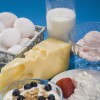 Frail older adults face unique challenges that may lead to discouragement, decreased food consumption, and irregular eating patterns, which can further lead to various nutrient deficiencies. Simple, nutritious snacks that are easy to eat are a great way to add nutritious foods to their diet. This 3-page fact sheet provides several easy snack ideas. Written by Paula G. Harris-Swiatko and Wendy J. Dahl, and published by the UF Department of Food Science and Human Nutrition, March 2013.
Frail older adults face unique challenges that may lead to discouragement, decreased food consumption, and irregular eating patterns, which can further lead to various nutrient deficiencies. Simple, nutritious snacks that are easy to eat are a great way to add nutritious foods to their diet. This 3-page fact sheet provides several easy snack ideas. Written by Paula G. Harris-Swiatko and Wendy J. Dahl, and published by the UF Department of Food Science and Human Nutrition, March 2013.
http://edis.ifas.ufl.edu/fs214
Aging in Place Is a New Life Stage (FAR6061/FM1049)
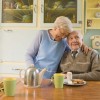 “Many families today face tough decisions about how to assist elderly relatives when they need some extra help with daily living. Unsurprisingly, many such adults want to remain in their own homes where they feel most comfortable…” This 2-page Family Album Radio transcript was written by Carol Church, and published by the UF Department of Family Youth and Community Sciences, February 2013.
“Many families today face tough decisions about how to assist elderly relatives when they need some extra help with daily living. Unsurprisingly, many such adults want to remain in their own homes where they feel most comfortable…” This 2-page Family Album Radio transcript was written by Carol Church, and published by the UF Department of Family Youth and Community Sciences, February 2013.
http://edis.ifas.ufl.edu/fm1049
Designing Educational Programs for Older Adults (FCS2216/FY631)
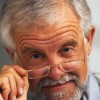 This 4-page fact sheet discusses marketing to older adults, location and timing of programs, and how to successfully share information with older adults. Written by Martie Gillen, Carolyn Wilken, and Jenny Jump, and published by the UF Department of Family Youth and Community Sciences, November 2012.
This 4-page fact sheet discusses marketing to older adults, location and timing of programs, and how to successfully share information with older adults. Written by Martie Gillen, Carolyn Wilken, and Jenny Jump, and published by the UF Department of Family Youth and Community Sciences, November 2012.
http://edis.ifas.ufl.edu/fy631
Adapting the Home (FCS2215/FY630)
 This 4-page fact sheet discusses AARP’s 10 basic ideas to increase home safety, how to individualize for each person or activity, how to apply universal design to make homes safer, and assistive devices. Written by Martie Gillen, Pat J. Dasler, and Jenny Jump, and published by the UF Department of Family Youth and Community Sciences, November 2012.
This 4-page fact sheet discusses AARP’s 10 basic ideas to increase home safety, how to individualize for each person or activity, how to apply universal design to make homes safer, and assistive devices. Written by Martie Gillen, Pat J. Dasler, and Jenny Jump, and published by the UF Department of Family Youth and Community Sciences, November 2012.
http://edis.ifas.ufl.edu/fy630
Fall Prevention (FCS2214/FY629)
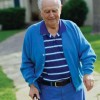 Among older adults (those 65 or older), falls are the leading cause of injury and death. When someone falls, they face long-term disability, lower productivity, and loss of independence. Falls can happen anywhere, but more than half of all falls happen at home. Many of these falls could be prevented by making simple changes in the home. This 3-page fact sheet was written by Martie Gillen, Kristen D. Smith, and Jenny Jump, and published by the UF Department of Family Youth and Community Sciences, November 2012.
Among older adults (those 65 or older), falls are the leading cause of injury and death. When someone falls, they face long-term disability, lower productivity, and loss of independence. Falls can happen anywhere, but more than half of all falls happen at home. Many of these falls could be prevented by making simple changes in the home. This 3-page fact sheet was written by Martie Gillen, Kristen D. Smith, and Jenny Jump, and published by the UF Department of Family Youth and Community Sciences, November 2012.
http://edis.ifas.ufl.edu/fy629
Financial Issues (FCS2212/FY627)
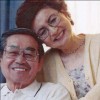 Although we cannot foresee unexpected events, planning can help us control some financial issues that may arise. This 4-page fact sheet highlights the main financial poblems older adults face during retirements, and solutions to help plan and manage a successful retirement. Written by Martie Gillen and Josephine Turner, and published by the UF Department of Family Youth and Community Sciences, November 2012.
Although we cannot foresee unexpected events, planning can help us control some financial issues that may arise. This 4-page fact sheet highlights the main financial poblems older adults face during retirements, and solutions to help plan and manage a successful retirement. Written by Martie Gillen and Josephine Turner, and published by the UF Department of Family Youth and Community Sciences, November 2012.
http://edis.ifas.ufl.edu/fy627
Safe Return (FCS2211/FY626)
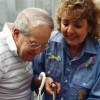 In the United States, more than 10,000 times each year a person with dementia becomes lost in the community and cannot find the way home. The quality of care people receive does not influence the likelihood of people with dementia to become lost. Even people who live in the best caregiving situations can become lost in the community. It can happen to anyone, even if the person does not have a tendency to wander. This 4-page fact sheet looks at why people with dementia become lost, how to prevent this from happening, and identify the best search strategies for finding someone who is lost. Written by Martie Gillen and Meredeth A. Rowe, and published by the UF Department of Family Youth and Community Sciences, November 2012.
In the United States, more than 10,000 times each year a person with dementia becomes lost in the community and cannot find the way home. The quality of care people receive does not influence the likelihood of people with dementia to become lost. Even people who live in the best caregiving situations can become lost in the community. It can happen to anyone, even if the person does not have a tendency to wander. This 4-page fact sheet looks at why people with dementia become lost, how to prevent this from happening, and identify the best search strategies for finding someone who is lost. Written by Martie Gillen and Meredeth A. Rowe, and published by the UF Department of Family Youth and Community Sciences, November 2012.
http://edis.ifas.ufl.edu/fy626
Family Relationships in an Aging Society (FCS2210/FY625)
 Never in the history of America or the world has the population had more older adults than children. This 5-page fact sheet discusses some issues that happen as a result of having a greater number of older adults than children. It also looks at the roles of the family and intergenerational relationships supporting our aging society. Written by Martie Gillen, Terry Mills, and Jenny Jump, and published by the UF Department of Family Youth and Community Sciences, November 2012.
Never in the history of America or the world has the population had more older adults than children. This 5-page fact sheet discusses some issues that happen as a result of having a greater number of older adults than children. It also looks at the roles of the family and intergenerational relationships supporting our aging society. Written by Martie Gillen, Terry Mills, and Jenny Jump, and published by the UF Department of Family Youth and Community Sciences, November 2012.
http://edis.ifas.ufl.edu/fy625
The Effect of Hospitalization on Older Couples (FAR3034/FM361)
 “Very often the tale is told of an elderly couple for whom the loss of one spouse is more than the other can bear—and the other partner dies relatively soon thereafter. Referred to as the bereavement effect, this phenomenon has been well studied and documented. Likewise, research has explored the weighty effect that a spouse’s illness has on the caregiving partner, also called caregiver burden. Studies have shown that declines in physical and mental health of a spouse are often linked to a decrease in their partner’s health.” This 2-page Family Album Radio transcript was written by Donna Davis, and published by the UF Department of Family Youth and Community Sciences, August 2012.
“Very often the tale is told of an elderly couple for whom the loss of one spouse is more than the other can bear—and the other partner dies relatively soon thereafter. Referred to as the bereavement effect, this phenomenon has been well studied and documented. Likewise, research has explored the weighty effect that a spouse’s illness has on the caregiving partner, also called caregiver burden. Studies have shown that declines in physical and mental health of a spouse are often linked to a decrease in their partner’s health.” This 2-page Family Album Radio transcript was written by Donna Davis, and published by the UF Department of Family Youth and Community Sciences, August 2012.
http://edis.ifas.ufl.edu/fm361
Hospice Care (FAR5003/FM375)
 “Recently a friend’s mother, Alice, was diagnosed with lung cancer, and even though she received all the possible treatments, the cancer was incurable. She went into hospice care so that she could get professional help in preparing herself and her family for her death.” This 2-page Family Al was written by Suzanna Smith, and published by the UF Department of Family Youth and Community Sciences, August 2012.
“Recently a friend’s mother, Alice, was diagnosed with lung cancer, and even though she received all the possible treatments, the cancer was incurable. She went into hospice care so that she could get professional help in preparing herself and her family for her death.” This 2-page Family Al was written by Suzanna Smith, and published by the UF Department of Family Youth and Community Sciences, August 2012.
http://edis.ifas.ufl.edu/fm375
Caregiver Stress and Elder Abuse (FAR6015/FM406)
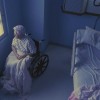 “One out of four people is a caregiver for a family member or friend (AoA). Most of these informal caregivers, as well as paid caregivers who work for agencies or on their own, are able to meet the many challenges of providing care and do an excellent job (National Center on Elder Abuse, 2002). Even so, every year, thousands of reports of elder abuse are confirmed, and unfortunately, elder abuse seems to be on the rise (National Center on Elder Abuse).” This 2-page Family Album Radio transcript was written by Suzanna Smith, and published by the UF Department of Family Youth and Community Sciences, August 2012.
“One out of four people is a caregiver for a family member or friend (AoA). Most of these informal caregivers, as well as paid caregivers who work for agencies or on their own, are able to meet the many challenges of providing care and do an excellent job (National Center on Elder Abuse, 2002). Even so, every year, thousands of reports of elder abuse are confirmed, and unfortunately, elder abuse seems to be on the rise (National Center on Elder Abuse).” This 2-page Family Album Radio transcript was written by Suzanna Smith, and published by the UF Department of Family Youth and Community Sciences, August 2012.
http://edis.ifas.ufl.edu/fm406
Respite Care for Caregivers of Older Adults (FAR6013/FM402)
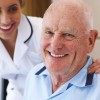 “My 90-year-old grandmother lived with my mom and dad in her final years. She was comfortable there and had the help, support and affection she needed. My parents prepared healthy meals for her, took her shopping, to doctor’s appointments, and to visit friends. My grandmother knew she was safe, secure, and loved.” This 2-page Family Album Radio transcript was written by Suzanna Smith, and published by the UF Department of Family Youth and Community Sciences, August 2012. http://edis.ifas.ufl.edu/fm402
“My 90-year-old grandmother lived with my mom and dad in her final years. She was comfortable there and had the help, support and affection she needed. My parents prepared healthy meals for her, took her shopping, to doctor’s appointments, and to visit friends. My grandmother knew she was safe, secure, and loved.” This 2-page Family Album Radio transcript was written by Suzanna Smith, and published by the UF Department of Family Youth and Community Sciences, August 2012. http://edis.ifas.ufl.edu/fm402
Overworked Families (FAR5051/FM407)
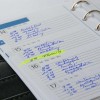 “Most weeks, as I breathlessly try to keep up with my family responsibilities and the demands of my job, I often lament, ‘There just aren’t enough hours in the day!'” This 2-page Family Album Radio transcript was written by Suzanna Smith, and published by the UF Department of Family Youth and Community Sciences, August 2012.
“Most weeks, as I breathlessly try to keep up with my family responsibilities and the demands of my job, I often lament, ‘There just aren’t enough hours in the day!'” This 2-page Family Album Radio transcript was written by Suzanna Smith, and published by the UF Department of Family Youth and Community Sciences, August 2012.
http://edis.ifas.ufl.edu/fm407
Contact Organization for Caregivers (FCS2258/FY870)
 As an older adult or caregiver for an older adult, you may need to contact multiple agencies and offices if you are seeking medical care. It helps to be organized when you contact these agencies so you know what questions to ask and have somewhere to write down the answers. This worksheet provides a contact form that will help you keep track of your conversations. This 3-page fact sheet was written by Martie Gillen and Carolyn S. Wilken, and published by the UF Department of Family Youth and Community Sciences, August 2012. http://edis.ifas.ufl.edu/fy870
As an older adult or caregiver for an older adult, you may need to contact multiple agencies and offices if you are seeking medical care. It helps to be organized when you contact these agencies so you know what questions to ask and have somewhere to write down the answers. This worksheet provides a contact form that will help you keep track of your conversations. This 3-page fact sheet was written by Martie Gillen and Carolyn S. Wilken, and published by the UF Department of Family Youth and Community Sciences, August 2012. http://edis.ifas.ufl.edu/fy870